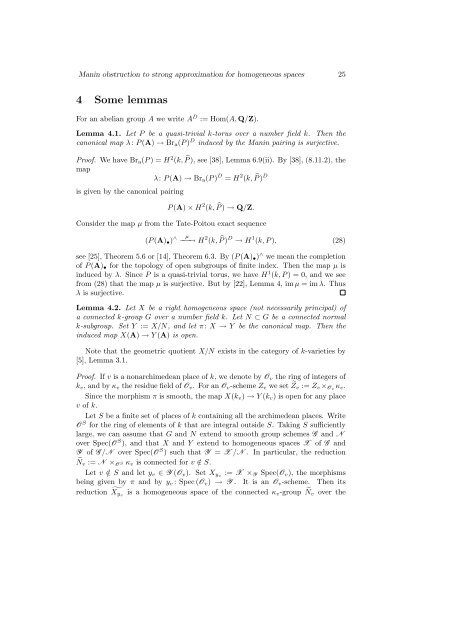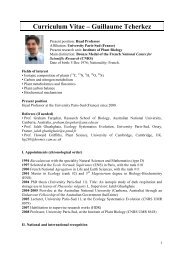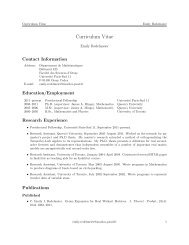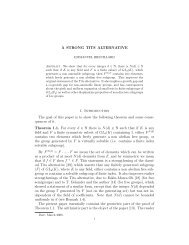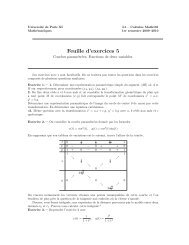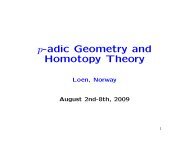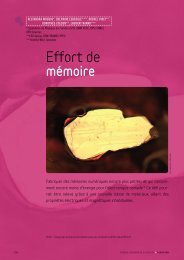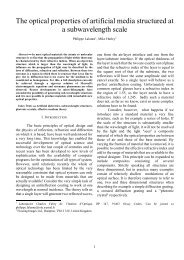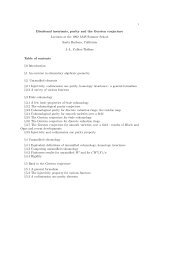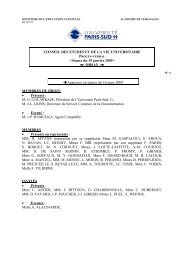Manin obstruction to strong approximation for homogeneous spaces
Manin obstruction to strong approximation for homogeneous spaces
Manin obstruction to strong approximation for homogeneous spaces
You also want an ePaper? Increase the reach of your titles
YUMPU automatically turns print PDFs into web optimized ePapers that Google loves.
<<strong>strong</strong>>Manin</<strong>strong</strong>> <<strong>strong</strong>>obstruction</<strong>strong</strong>> <<strong>strong</strong>>to</<strong>strong</strong>> <strong>strong</strong> <strong>approximation</strong> <strong>for</strong> <strong>homogeneous</strong> <strong>spaces</strong> 254 Some lemmasFor an abelian group A we write A D := Hom(A, Q/Z).Lemma 4.1. Let P be a quasi-trivial k-<<strong>strong</strong>>to</<strong>strong</strong>>rus over a number field k. Then thecanonical map λ: P (A) → Br a (P ) D induced by the <<strong>strong</strong>>Manin</<strong>strong</strong>> pairing is surjective.Proof. We have Br a (P ) = H 2 (k, ̂P ), see [38], Lemma 6.9(ii). By [38], (8.11.2), themapλ: P (A) → Br a (P ) D = H 2 (k, ̂P ) Dis given by the canonical pairingP (A) × H 2 (k, ̂P ) → Q/Z.Consider the map µ from the Tate-Poi<<strong>strong</strong>>to</<strong>strong</strong>>u exact sequence(P (A) • ) ∧ µ−−→ H 2 (k, ̂P ) D → H 1 (k, P ), (28)see [25], Theorem 5.6 or [14], Theorem 6.3. By (P (A) • ) ∧ we mean the completionof P (A) • <strong>for</strong> the <<strong>strong</strong>>to</<strong>strong</strong>>pology of open subgroups of finite index. Then the map µ isinduced by λ. Since P is a quasi-trivial <<strong>strong</strong>>to</<strong>strong</strong>>rus, we have H 1 (k, P ) = 0, and we seefrom (28) that the map µ is surjective. But by [22], Lemma 4, im µ = im λ. Thusλ is surjective.Lemma 4.2. Let X be a right <strong>homogeneous</strong> space (not necessarily principal) ofa connected k-group G over a number field k. Let N ⊂ G be a connected normalk-subgroup. Set Y := X/N, and let π : X → Y be the canonical map. Then theinduced map X(A) → Y (A) is open.Note that the geometric quotient X/N exists in the category of k-varieties by[5], Lemma 3.1.Proof. If v is a nonarchimedean place of k, we denote by O v the ring of integers ofk v , and by κ v the residue field of O v . For an O v -scheme Z v we set ˜Z v := Z v × Ov κ v .Since the morphism π is smooth, the map X(k v ) → Y (k v ) is open <strong>for</strong> any placev of k.Let S be a finite set of places of k containing all the archimedean places. WriteO S <strong>for</strong> the ring of elements of k that are integral outside S. Taking S sufficientlylarge, we can assume that G and N extend <<strong>strong</strong>>to</<strong>strong</strong>> smooth group schemes G and Nover Spec(O S ), and that X and Y extend <<strong>strong</strong>>to</<strong>strong</strong>> <strong>homogeneous</strong> <strong>spaces</strong> X of G andY of G /N over Spec(O S ) such that Y = X /N . In particular, the reductionÑ v := N × O S κ v is connected <strong>for</strong> v /∈ S.Let v /∈ S and let y v ∈ Y (O v ). Set X yv := X × Y Spec(O v ), the morphismsbeing given by π and by y v : Spec (O v ) → Y . It is an O v -scheme. Then itsreduction ˜X yv is a <strong>homogeneous</strong> space of the connected κ v -group Ñv over the


